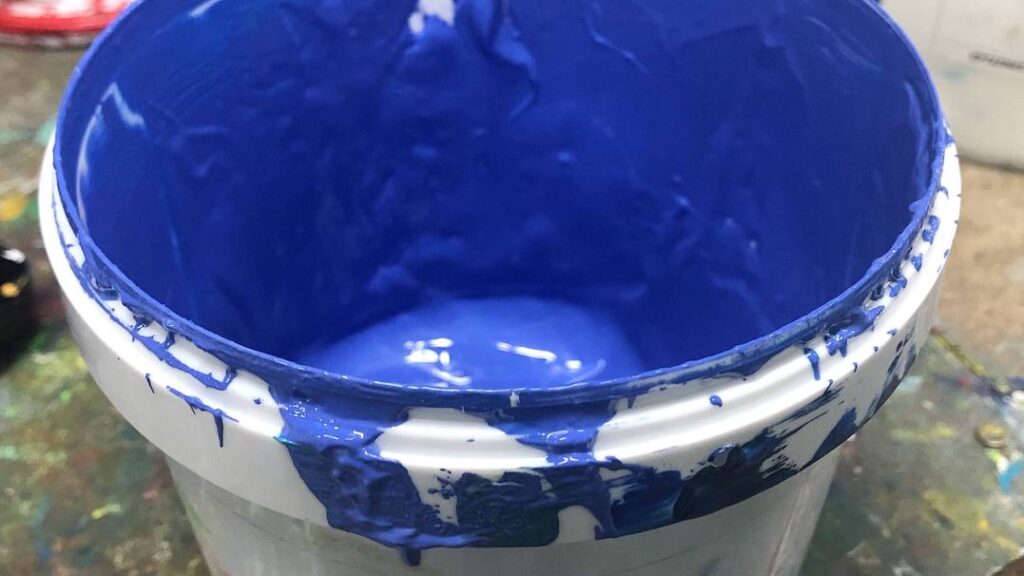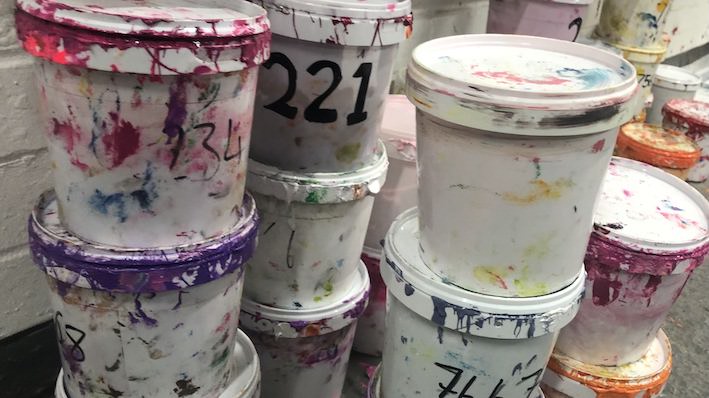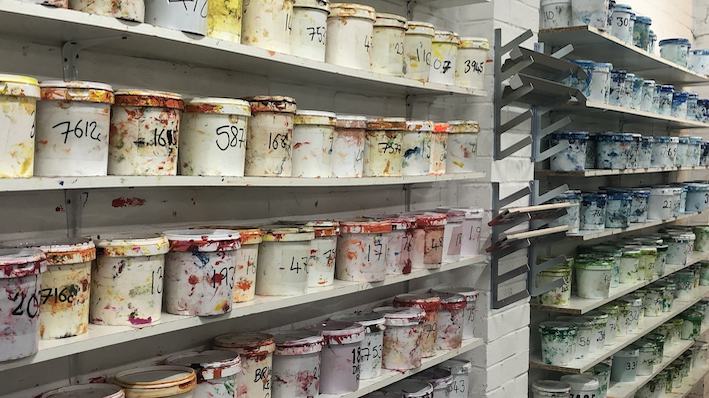The apparel industry works with various methods of printing on garments, from direct-to-garment (DTG) printing to vinyl printing to relabelling and more. But when it comes to choosing inks to work with, generally, it is plastisol vs water-based inks. Plastisol is the more common choice for several reasons because they are deemed more convenient. Water-based inks aren’t worse by any means (they even have some advantages over plastisol inks).
Our Studio Team Leader has provided us with his expert knowledge regarding production processes for both types of inks! He’s kindly prepared the following top points to help you decide which one works for you. You’ll find out what to watch out for and why Innotex Transfers uses plastisol inks!
What Is the Difference Between Water-Based Inks and Plastisol Inks?
Apparently, they look the same but there are key differences between water and plastisol inks. We’ve covered them below!
Properties of Inks
As suggested in the names, water-based inks are made out of water, but plastisol inks are made of liquid plastic. The properties in its inks are what differentiates the two, otherwise they both work similarly. 3 main ingredients that make up ink are: the binder, pigment and the base. The binder “binds” the ink, pigment adds colour to the ink and the base (in liquid form) supports everything else.
The Curing Process
Plastisol only requires small dryers, so it’s considered the faster ink to dry. The drying process is completed between 125-160ºC for 15-20 seconds, increasing production efficiency. Even though water-based inks are PVC free and consist mainly of water, some believe it to be eco-friendly. However, seeing as water-based inks require larger driers, the process becomes longer and therefore, is less eco-friendly.
Doing this increases energy consumption, so it isn’t the best approach for an eco-friendly future. In fact, water-based inks have to be held at the required temperature of 160ºC for 2 minutes which is A LOT longer! Depending on what equipment you have available, the drying time may vary.
The Finished Result
Another difference is the finished result of the product. When you work with water-based inks, you’ll find that the finish is smooth and somewhat matte-like. Plastisol inks add a bit more definition to the substrate, creating a bit more rigidness. It appears glossy, which may be preferred by most.

Read our blog on Transfer Paper For Heat Press Machine
The Advantages and Disadvantages of Plastisol and Water-Based Inks
We’ve set out the contrasts between the two in a table format so you can process the information easily. Have a read below:
Plastisol Inks | Water-based Inks | |
Advantages | • It’s easier and quicker to cure than water-based inks
• The ink won’t dry on the screen if left for a short while
• Plastisol isn’t limited on choice of emulsion | • The finish on the substrate is smoother
• They’re more suitable for various transfers i.e. rolls, towels, etc.
• The finished result doesn’t add weight to the garment (it’s smoother) |
Disadvantages | • The finished result is a bit stiffer but appears glossy | • There’s a longer process to cure the ink
• Water-based inks require larger dryers – it’s not energy efficient
• They’re limited to water-resistant emulsion only
• The pot-life for the ink is limited to 4-12 hours when adding water |
Though water-based inks have further disadvantages, it mainly boils down to the curing process (stated beforehand). The actual ink itself is quite beneficial and can be debated as being better than plastisol depending on the type of print you’re after. However, water-based methods lack efficiency and are time-consuming to handle. This results in most manufacturers with a large client base (like us) using plastisol inks.

Read our blog titled Cold Peel or Hot Peel Transfer: What’s The Go-to?
Can You Iron Plastisol Ink?
Whether you’re working with plastisol or water-based inks, it’s good to note that it is NOT recommended to iron directly over the section of a substrate that uses either type of ink. If you still need to iron the area, turn the garment inside out and keep the temperature lower to avoid issues with the ink components.
Plastisol vs Water-Based Inks: Which One Is Better?
Which ink is best for t-shirt printing? Though it’s clear plastisol inks have fewer disadvantages in production time, water-based inks are still worth considering for a smaller business with more time on their hands. It’s also important to factor in the finished result to make a conscious choice, as plastisol isn’t the best option for everyone if you’re looking for smoother results. Overall, plastisol inks are better for t-shirt printing as compared to water based inks.
If you’d like to take a look at how glossy and matte finishes can look, order a FREE sample from our website to receive physical copies in hot peel and cold peel ready-to-press transfers! Want to discuss specific heat transfer requirements? Give us a ring or drop an email.


